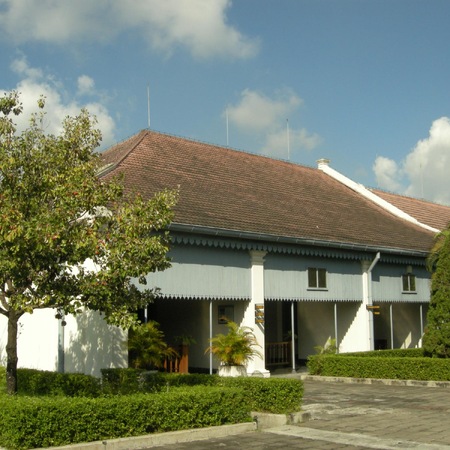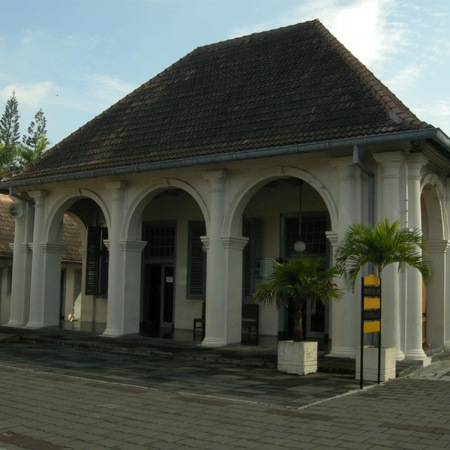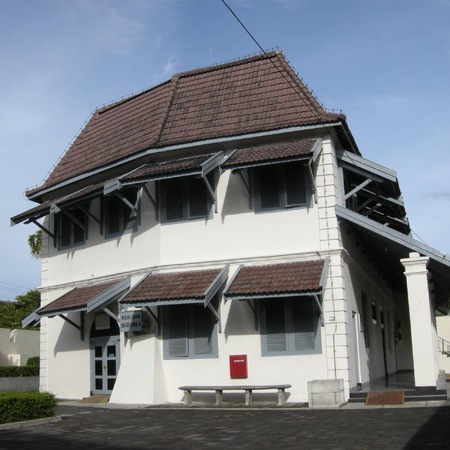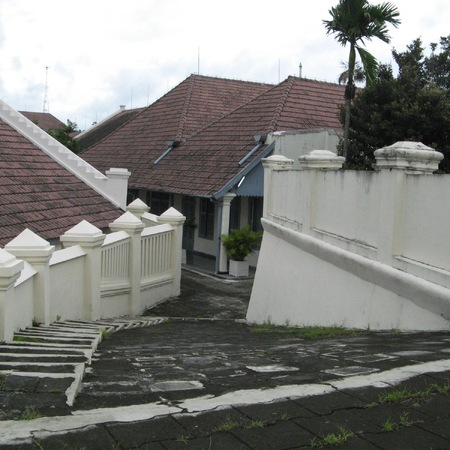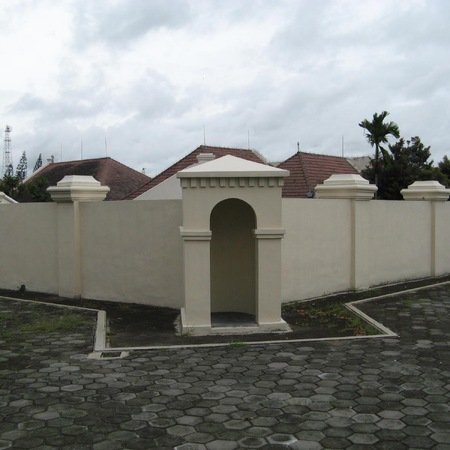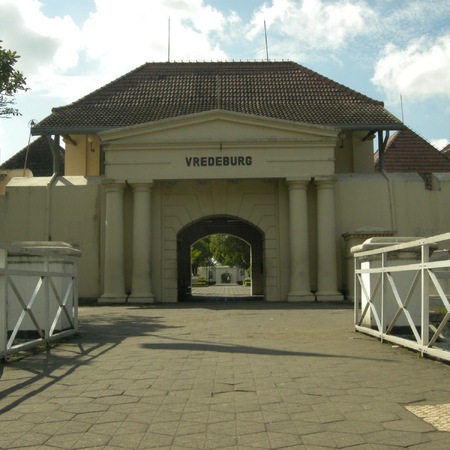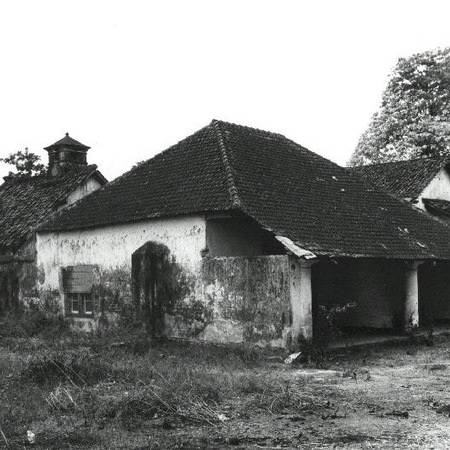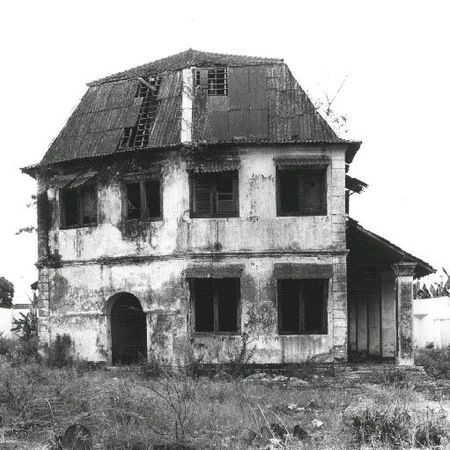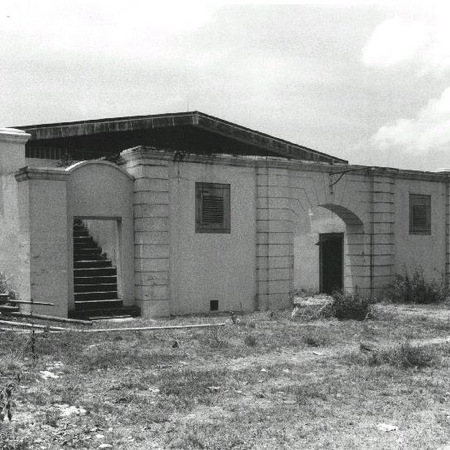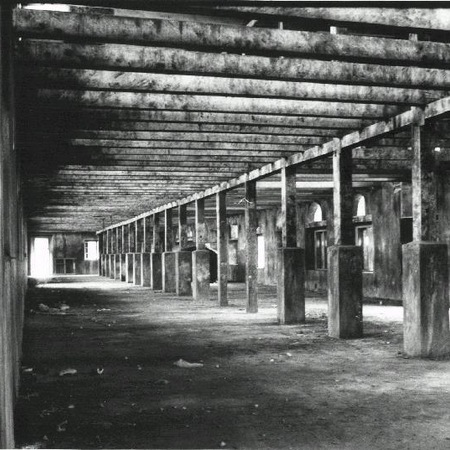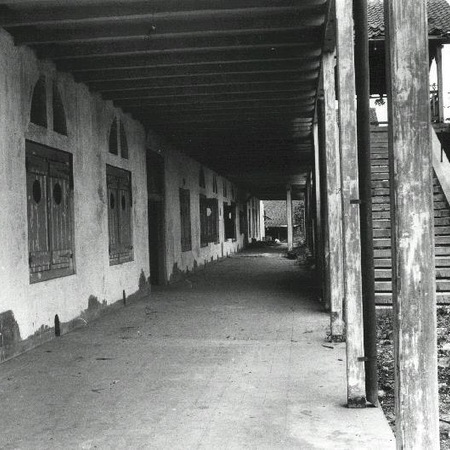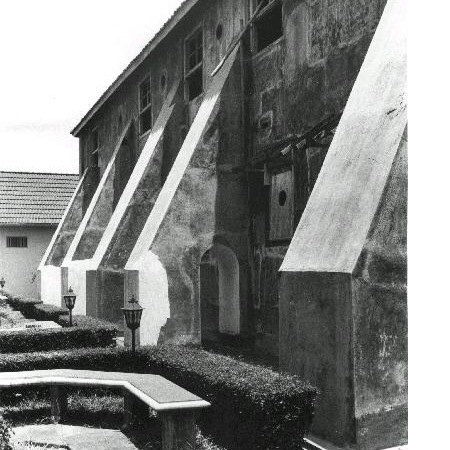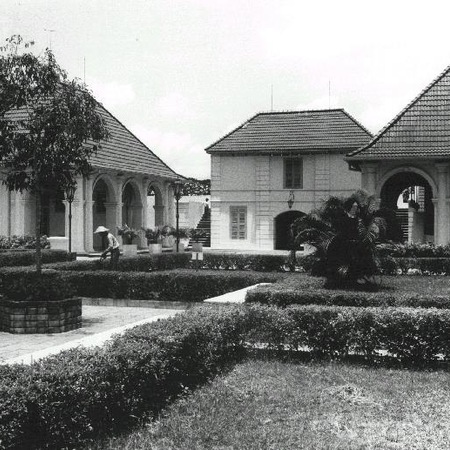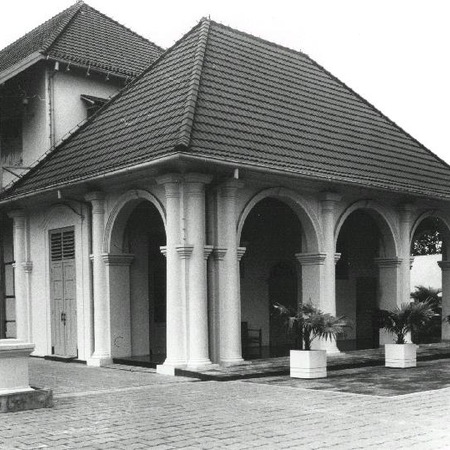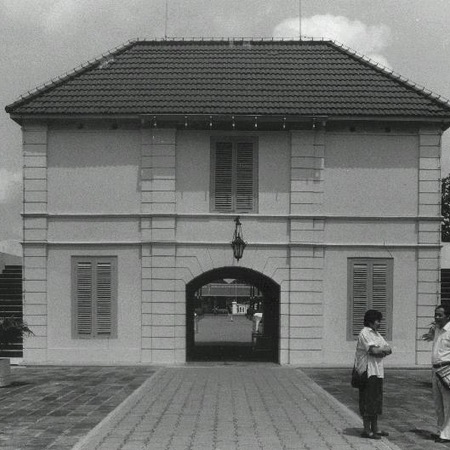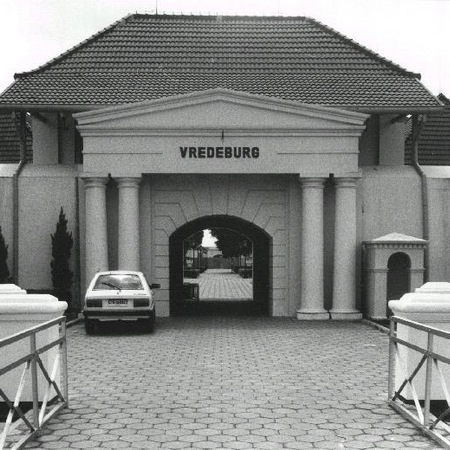One of the obligations of the treaty of Giyanti, which in 1755 divided the empire of Martaram, was the construction of a VOC fort in the new capital Yogyakarta. The sultan paid for the construction. Sultan Hamangkubuwono I (1749-1792) tried to stall the building of the fort, located just 400 meter from his kraton. In 1765 the construction started, but it was not until 1790 that fort Rustenburg (Castle of Rest) was completed. It was a square fort with four bastions and surrounded by a moat. There was enough space inside the fort to house 500 soldiers.
In 1811 the British conquered Java. Tensions grew between lieutenant Governor James Stamford Raffles and the sultan of Yogyakarta. On 17 June 1812 Raffles arrived with his army in Yogyakarta. Negotiations had no success. After the outbreak of the hostilities the artillery of fort Rusteburg fought a duel with the canons in the kraton. As a result, a powderhouse in each of the forts. On 20 June British troops stormed and occupied the Kraton.
After the return of the Dutch in 1820 new tensions arose, which led to the outbreak of the Java War on 25 July 1825. Six days later Ratu (queen) Agung fled to the fort with her young grandson, sultan Hamengkubowono V. The supporters of Dipponegoro started a siege of the kraton and the fort, which ended with the arrival of general Hendrik Merkus de Kock and his army on September, 25. After the war the name of the fort was changed in Vredeburg (Castle of peace).
Following severe damage after an earthquake in 1867 major repairs were undertaken. The fort remained in use by the army, and in the 20th century was used by the Japanese (as a prison, 1942-1944), the army of the Indonesian Republic (1945-1948), Dutch paratroopers (Dec. 1948 – May 1949), and the Indonesian Army (1949-1980). It is now the National museum of the Struggle, which is dedicated to the war of independence.
The buildings of the fort are in a good condition. In 2014 the ditch of fort, which was filled with earth, was excavated
